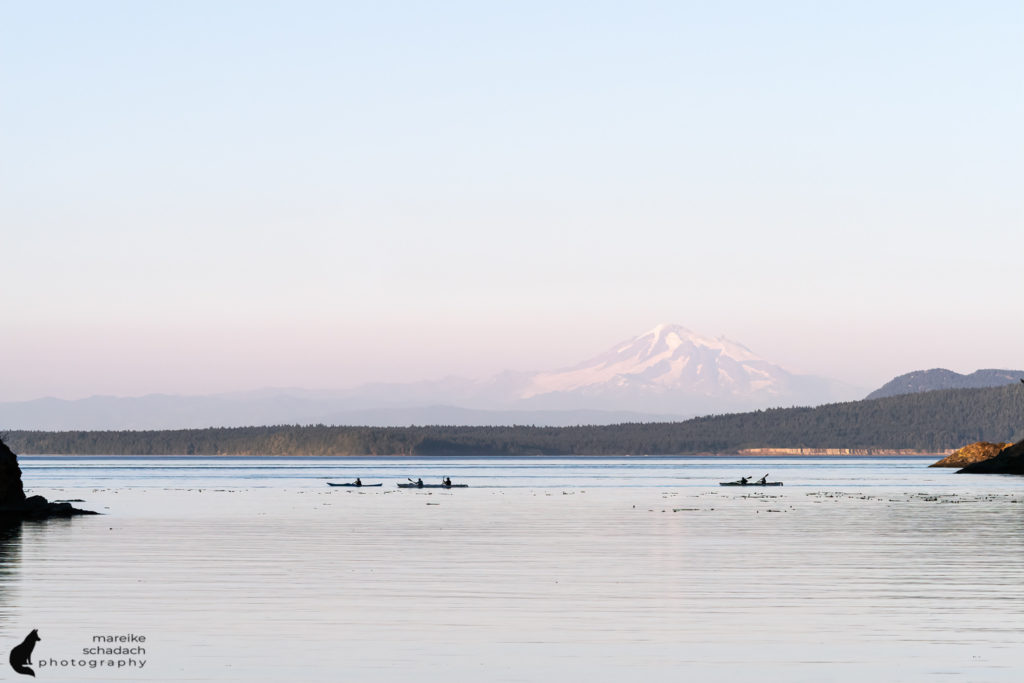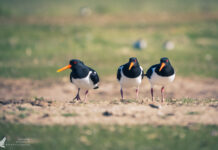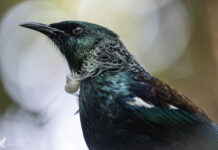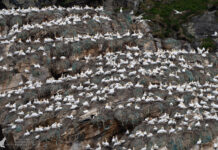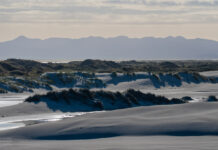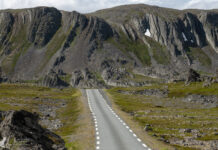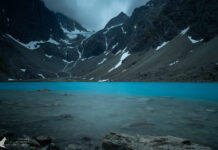
Norway. In November, the herring migrate to the sheltered fjords of northern Norway. They are followed by the orcas and the humpback whales. They hunt the herring in the fjords and can be seen in large numbers on some days. One of the best areas to watch orcas at the moment are the waters around Skjervøy. In addition, the small fishing village in the north of Norway is the only place in the world where it is possible to snorkel with orcas.
Unassigned, unpaid advertising. The article contains affiliate links.

What you will read in the following article:
A Guest at the Lunch Table of the Orcas
Orcas, Herrings and Michelin Men/Women
Is Snorkeling with Orcas dangerous?
Winter Whales in Norway on the Polar Front
Regulations when Snorkeling with Orcas
Whale Watching in Norway - When and where?
What else is there in wintry Norway
A Guest at the Lunch Table of the Orcas
The water is deep, dark and cold. Silvery scales swirl around me. Every now and then a dead herring drifts past me, sometimes only half a herring. Everything looks a bit like a battlefield. I lift my head above the surface of the water to get my orientation. In front of me, the dorsal fins of three orcas stick out of the water. They are already quite close. I continue to fin, soon I should be able to see them. I put my head under the water.
First I hear them. Then I see their white bellies and the eye spots light up under water. Slowly the orcas take shape and suddenly I see the bait ball next to me. Then there are more and more orcas. They are everywhere: next to me, under me and some are in the middle of the Bait Ball. While some orcas are circling the bait ball, others are whirling around, swimming a loop and hitting the fish powerfully with their tail fin. They then eat the dead herring. One by one. Right next to me.
What is a bait ball? What is a Bait Ball? A bait ball is formed when small fish swim in a tightly packed spherical formation. It is a last defense measure taken by small schools of fish when threatened by predators. Orcas take advantage of this behavior and herd the herring into bait balls and then specifically strike the fish with their tail fins to kill them.

The three underwater photos of the orcas were taken by Michael Eisenbart. He was one of the five snorkelers in my group. You can find more great underwater photos on his Instagram account @michaels_bubbles and at michaels-bubbles.picfair.com.
Thanks so much again, Michael.

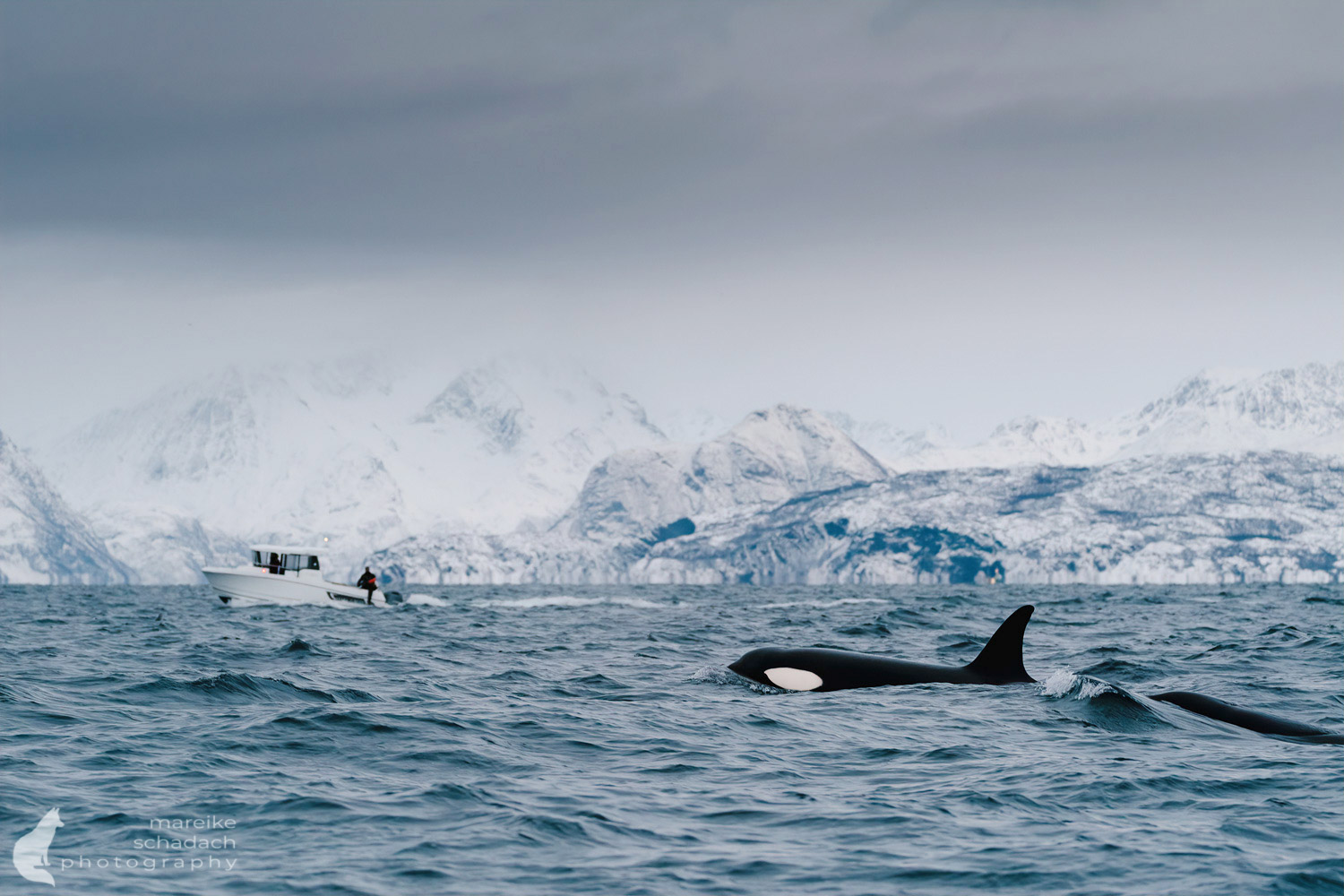
Orcas, Herrings and Michelin Men/Women
It's not so easy when you have so little mobility due to the many layers of insulation in the dry suit. For the orcas I must make a too funny picture. I drift like a Michelin man on the water surface while the elegant animals eat next to me. At some point I realize that we snorkelers are part of the game: the herrings also retreat from us and our fin strokes, we keep the bait ball in shape together with the orcas. Amazing, I still can't believe it. It's like I'm in the middle of a BBC documentary. I can see up to ten orcas at once. There is also a calf.

Sometimes an orca passes me more slowly and inspects me . They don't look at you frontally, but sideways. Since their eyes are on the sides, they can't see well what is directly in front of them. Similar to horses. Some even looked out of the water. Spy hopping is what they call it.
But the school of herring was more interesting than I was and the whales continued their hunt undeterred. It was especially impressive when one of the bulls with his huge dorsal fin passed me by. I'm not quite sure, either my heart was racing at that moment or it stood still while everything flooded in on me: the bait ball, the orcas, the sounds of the orcas, the cold, the darkness and the fish scales swirling through the water like snowflakes . In those minutes I was one of the happiest people in the world.

Is Snorkeling with Orcas dangerous?
When I told my friends and acquaintances about my travel plans to the Winter Whales of Norway, two questions kept coming up:
"Aren't orcas dangerous? What if they want to eat you?"
Each type of orca specializes in the prey available in its particular habitat. Over many generations, this has evolved into very specific feeding habits and hunting techniques . Orcas in Norway eat only herring. However, other orcas, for example in the Pacific, are different: the Southern Residents specialize in salmon, the Transient Orcas in marine mammals, and the Offshore Orcas in sharks. The orcas strongly adhere to their feeding habits. In some cases, they are not anatomically designed to change their diet at all. For example, Southern Residents' teeth and jaws are not strong enough to chew marine mammals. Even when their main food, Chinook salmon, becomes more scarce in their habitat, they do not start eating seals. Rather, they starve to death, which unfortunately is actually already happening.
Read more about the
Orcas in the Salish Sea
and about a
Kayak Tour at the Orcas of the San Juan Islands
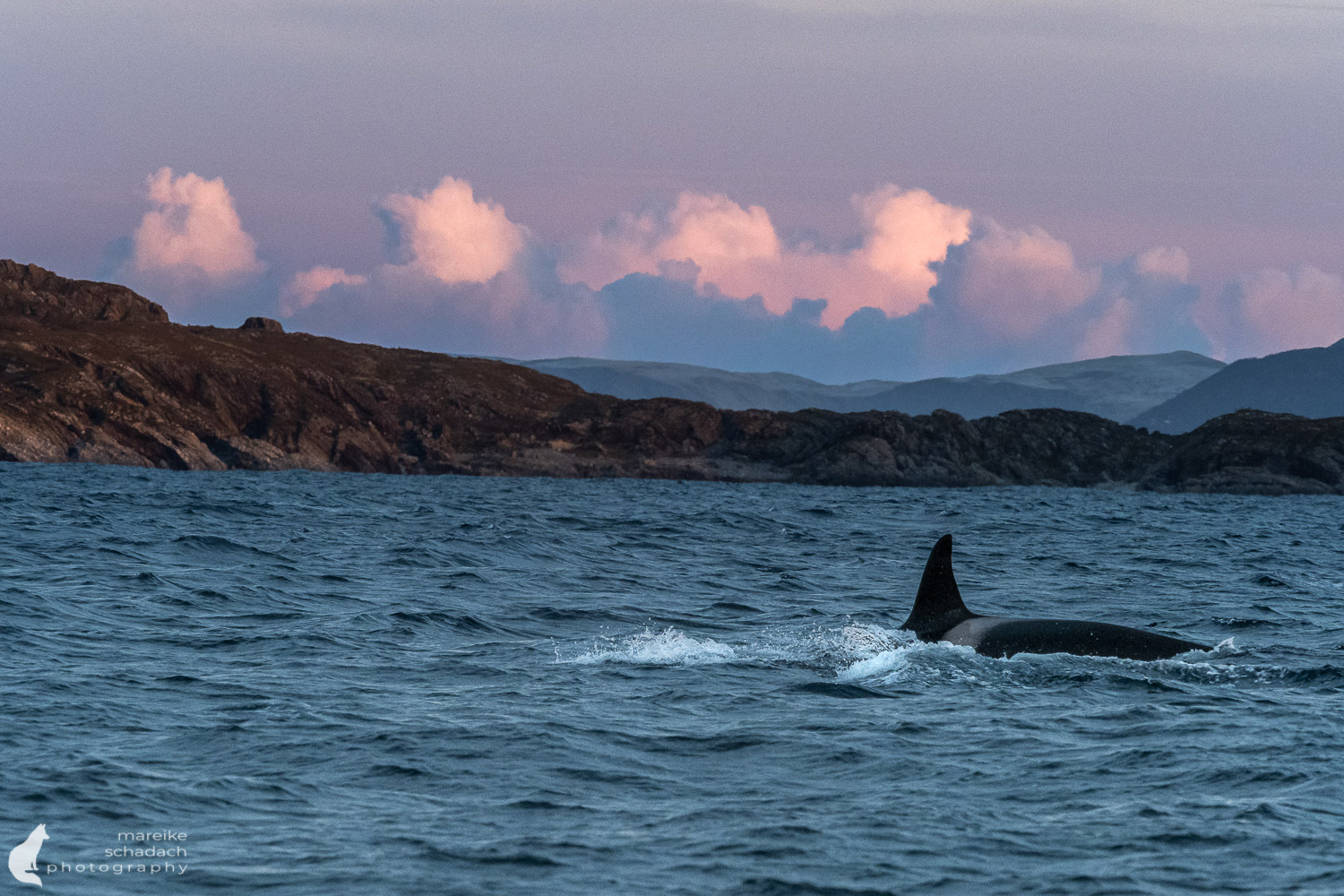
"... and the Orca really doesn't eat you?"
The feeding habits aside: Many people believe in a spiritual connection between humans and whales. In some cultures, humans are even descended from whales. Some legends tell of whales coming ashore in human form to seduce young women. There are many more myths surrounding these majestic, clever sea creatures. Is there any truth to it? I don't know, but I find it super exciting and love such stories.
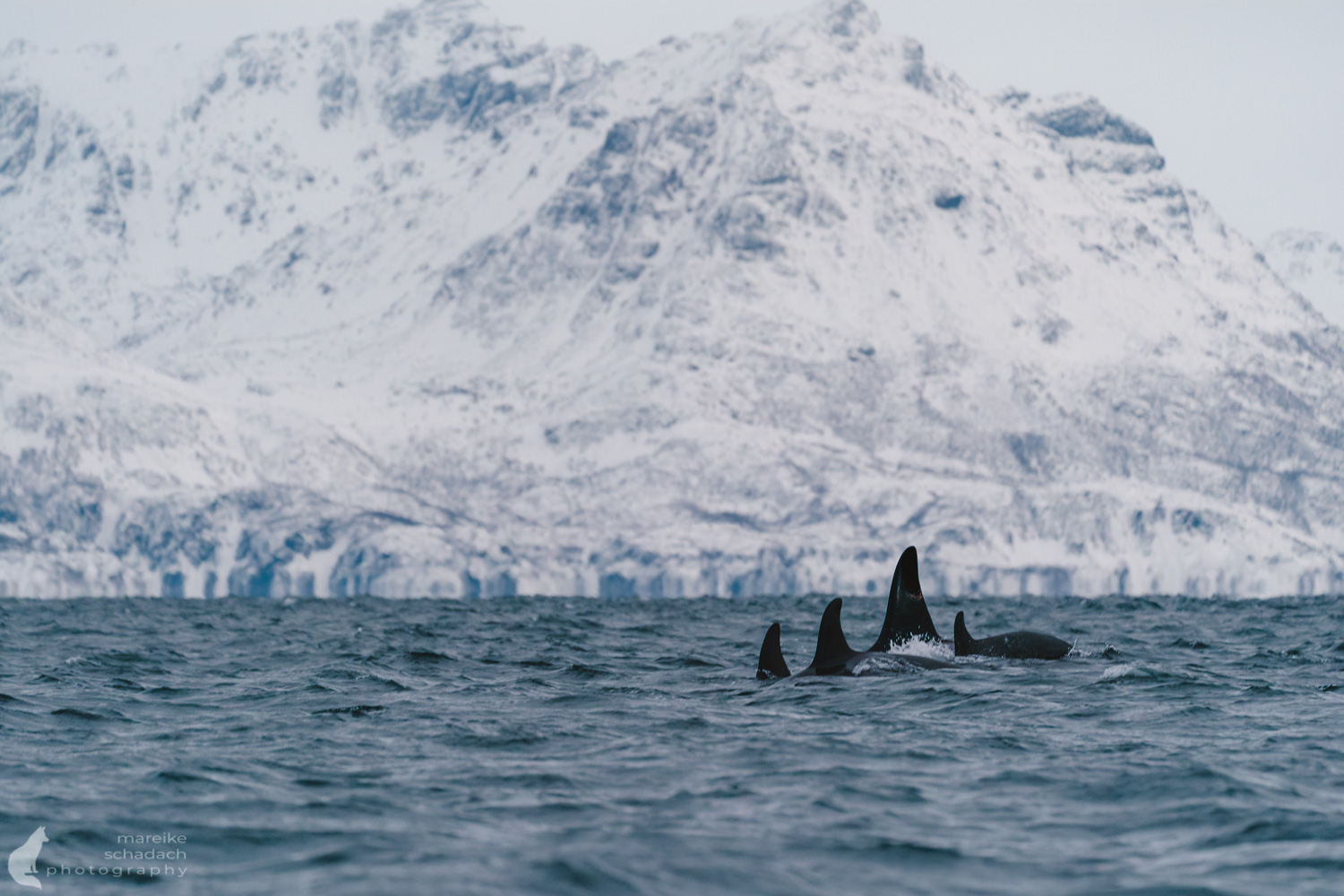
This was one side of the coin. Here comes the other:
Yes, there have been incidents and even deaths by orcas. However, these have happened in aquariums where orcas in captivity have attacked their trainers. No attacks on humans have yet been reported by a wild and free-living orca. You can learn more about this topic in the documentaries Blackfish and Blackfish II (links to YouTube).
The only attacks by wild orcas that I know of occurred in recent years off the Spanish and Portuguese southern coasts on sailboats. In particular, the rudder was attacked. The atypical behavior of the orcas puzzles scientists. Possible explanations are play instinct, learning of hunting strategies, stress or negative experiences with sailboats. More about this can be found on the page Dolphin Protection.
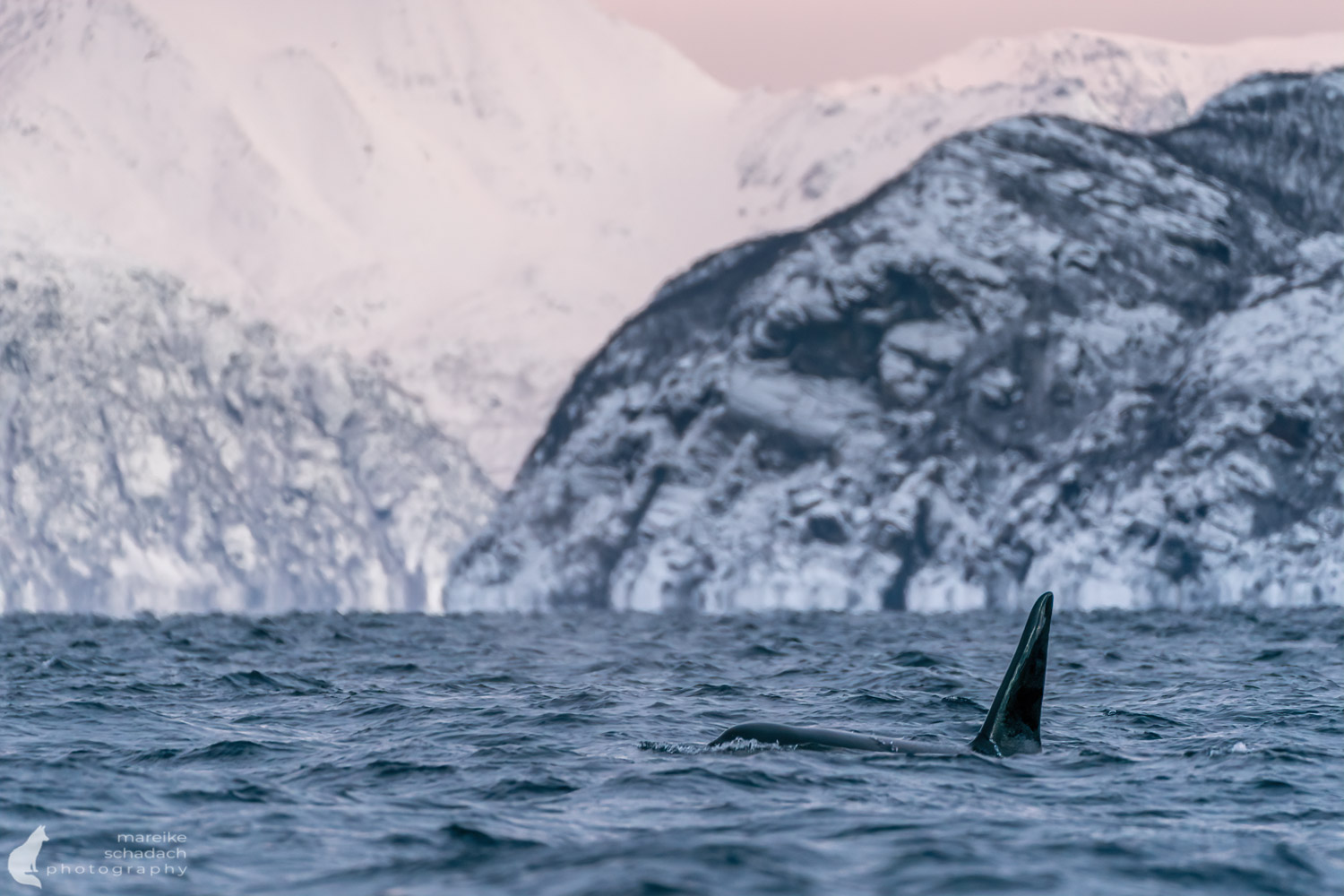
"Never snorkel over the Bait Ball!"
Nevertheless, snorkeling with whales is not completely harmless. The arctic temperatures and the huge wild animals should by no means be underestimated. You can prepare for the temperatures with appropriate equipment. But wild animals remain wild animals. Orcas are extremely agile under water, but who can rule out that the swipe with the tail fin really only hits the herring? And sometimes humpback whales lurk in the depths and steal the herrings from the orcas with their mouths wide open. This all happens very quickly. It's bad luck to end up in the whale's mouth together with the herring. Therefore, our guides told us right at the beginning of the tour: "Never snorkel above the bait ball!
Fortunately, the throat of humpback whales is very narrow. Therefore, they cannot swallow a snorkeler, but rather spit him out again. This actually happened to a snorkeler off South Africa once. Click here to watch the video on YouTube.

"Isn't it cold there in winter? And then in the water as well!"
This question deserves a clear YES. The air temperature during our one-week tour in mid / late November was between 4 and -12° Celsius during the day. The water was between 3 and 4° Celsius. You only go into the water at these temperatures with a dry suit and several layers of insulation underneath. For the head we got a bright orange 10 mm neoprene hood and for the hands thick 3-finger neoprene gloves. Usually the snorkeling equipment including the suit can be rented from the tour provider.
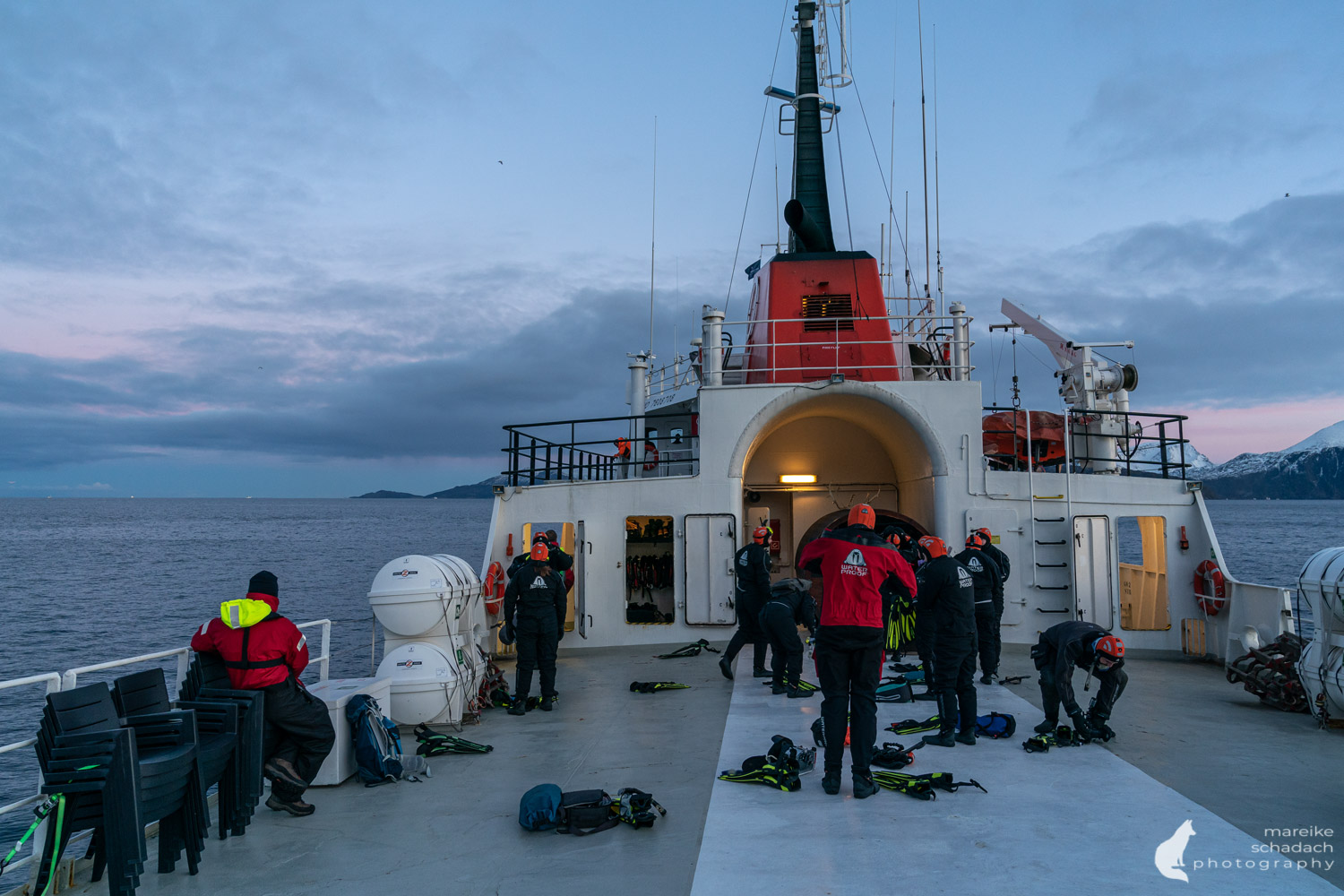
A remaining risk persists.
Minimize it by using good equipment (rental equipment if necessary), practice snorkeling in local waters beforehand, talk to your doctor about snorkeling in cold waters if necessary (not always recommended), be alert underwater, watch your buddies and listen to your guides.
Winter Whales in Norway on the Polar Front
Five days liveaboard on the Polar Front
Five years ago I was already in Tromsø and Andenes to see orcas. But at that time the orcas had already moved further north in mid-February. To increase the probability of seeing them, I decided to go on a whale safari for several days as a "liveaboard" on the Polar Front. So it was possible to follow the orcas to their feeding grounds. To get closer to the orcas or to snorkel with them, we used two Zodiacs.

We saw orcas on four days and humpback whales on four days during the five days aboard the Polar Front. Only one day the weather was so bad that we did not go with the Zodiacs. On two days we were able to accompany the orcas in the Zodiac for a longer time. However, since they swam too fast, there was no possibility to snorkel with the orcas. In fact, this was only possible on one of the five days. Because only when the orcas are hunting or doing their social life, they stay long enough at one place and can be observed while snorkeling.

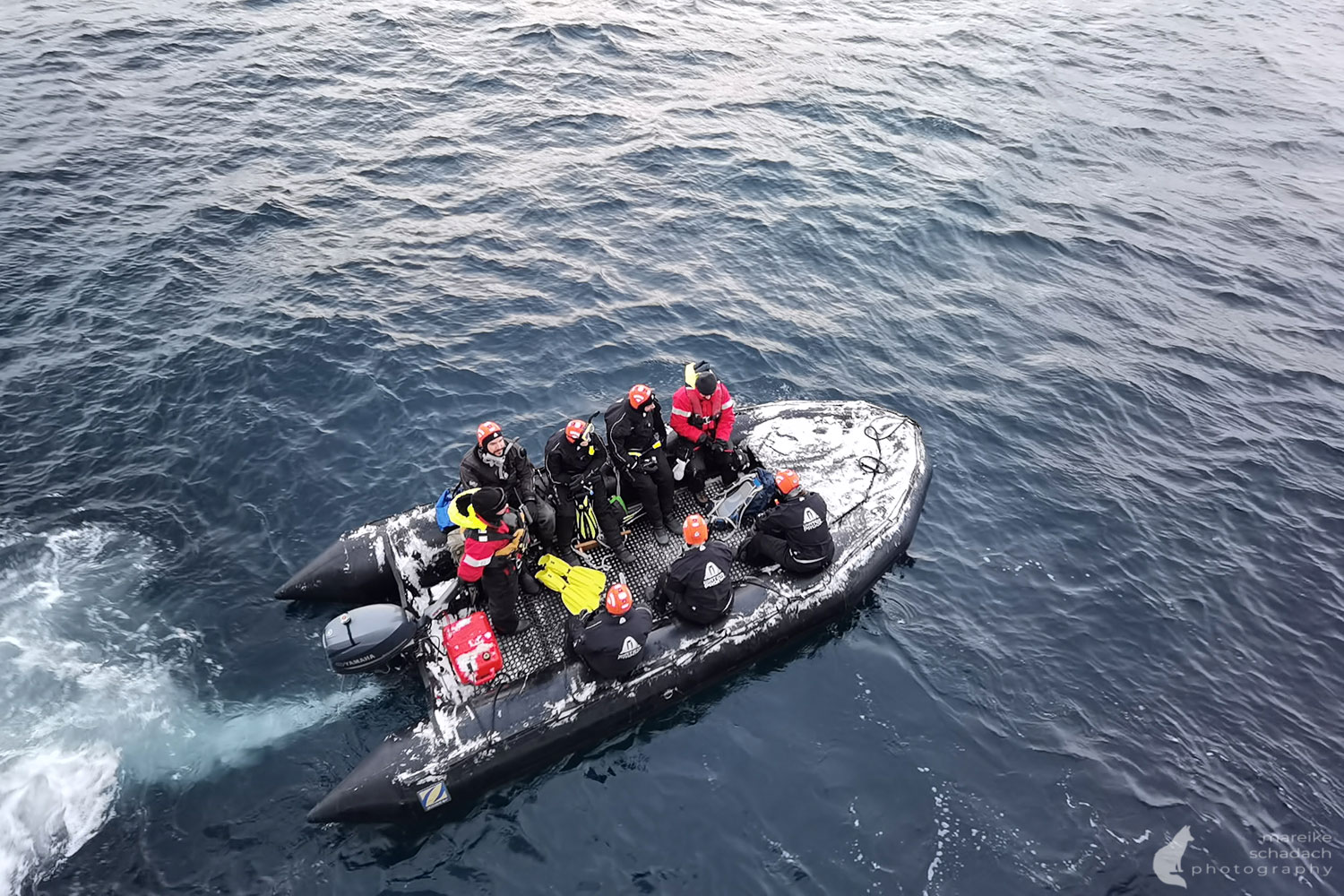
In the water with Orcas - When one forgets the cold
We went snorkeling twice in a row on that one day. Everything went so fast that I didn't even check the charge of my camera battery (probably my mind was already on the orcas in the water). The first time I had not seen any orcas. But my Go Pro diligently filmed the dark water, scales from the herring, dead herring or parts of herring. Sometimes other snorkelers or the Zodiac. Above water I filmed the snow flurries and sometimes a dorsal fin from an orca. On the second snorkel, my GoPro's battery died. And I was in the middle of the orcas.
Tip: In cold water, the battery of the GoPro lasts much longer when the GoPro is in the underwater housing.
Snorkeling in cold water makes you stiff and without energy. But I noticed that only later. Fortunately, there were helping hands that pulled us snorkelers into the Zodiac later. My hands were icy.



Time to thaw out - back on board
When we were back on board the Polarfont, we were all completely frozen. The breeze on the Zodiac made the -12 °C a bit colder still. The crew helped us take off our gear and we rushed down to our cabins to warm up. My fingertips ached and when I looked in the mirror, I was downright startled: my lips were thickly swollen. I hardly recognized myself. I quickly turned away from the mirror and toward my phone. I wanted to share my joy, but only managed to send a few smilies and whales with my fingers.

Regulations when Snorkeling with Orcas
A dream came true, …
To observe the orcas in their natural habitat was one of my biggest dreams. Our two Zodiacs with six snorkelers each were the only whale watching boats with the orcas that day. Other boats didn't even leave Skiervøy because of bad weather. I did not have the impression that the whales felt disturbed by us.

... BUT
But of course this can look completely different on other days. In Norway there are no regulations for whale watching or snorkeling with orcas (as of 2022) . It is hard for me to believe that. But how the whale watching is done depends only on the whale watching agency or the boat driver. Anyone can hire a boat in the harbor and be driven out. How successful, whale friendly or safe this is for the snorkelers is then a matter of luck. That's where you come in: research beforehand with which provider you want to make the tour and avoid the too cheap offers.
After a short research on the internet I found some adventurous stories:
- too many boats at one Orca Pod
- Snorkelers jumping from the stern of the boat into the water while the engine is running with the propeller.
- Fishing boats are obstructed by snorkelers getting too close to fishing gear (sometimes to the suction device that sucks the herring from the nets into the boat).
- A boat pulls into the path of migrating orcas to let a snorkeler into the water directly in front of the whales. (We have observed this ourselves).
Meanwhile, there are requirements that whale watching boats and snorkelers must keep a minimum distance from fishing boats.
At the end of 2021, the issue was taken up and discussions about whale watching regulations continued. I hope that sensible rules will be put in place for the benefit of the orcas. At the same time, I also hope that snorkeling with orcas will not be completely banned.


Whale Watching in Norway - When and where?
The orcas follow the schools of herring. They reach the Norwegian fjords at the end of October and stay until about mid-January. However, the exact time period can vary slightly each year.
At the moment the best chances for observation are at Skjervøy. However, this has not always been the case. A few years ago, orcas were frequently seen around Tromsø and Kvaløya (Whale Island), as well as at Andenes in northern Vesterålen. Before that, they were easily seen for a long time much further south on the Tysfjord. However, as the climate has warmed, the herring have moved further and further north. It is possible that they will also eventually move on from Skjervøy.

But although the whales have already moved further north, whale watching tours are still offered from Tromsø*. Since Tromsø is easily accessible via the airport, there are still enough guests here to take the long boat trip from Tromsø to Skjervøy (about 3 hours each way).
It is more relaxing to stay in Skjervøy for a few days and start the whale watching tour from Skjervøy*. Snorkeling tours can be booked at Orca Norway, Lofoten Adventure or at Sea Safari Andenes . However, the accommodations in Skjervøy*are limited. You should book early.
For those who can't get enough and want to maximize their sightings, I recommend a multi-day tour, such as snorkeling with orcas from Waterproof Expeditions on board the Polar Front.




What else is there in wintry Norway
Humpback whales
Besides the orcas, there are also many humpback whales in the winter fjords. They also follow the herring shoals to the north. While I was snorkeling with the orcas in the water, I felt better when there was no humpback whale around. Otherwise, of course, I was always thrilled when I could watch the mighty baleen whales.


See Northern Lights
Number one in northern Norway is, of course, the aurora borealis. On clear days it is very likely that you will see it dancing in the dark night sky. Most of the time it is bright green. Sometimes it can be pink at the edges. With the help of the app "My aurora forecast" you can get an aurora forecast for your current location. This is based on the Kp index, which is a measure of solar activity.

In addition to the aurora borealis, the sunrises and sunsets , as well as the long twilight hours , are particularly beautiful to behold. The low sun makes for great, atmospheric light, which is a real highlight for photographers in particular.
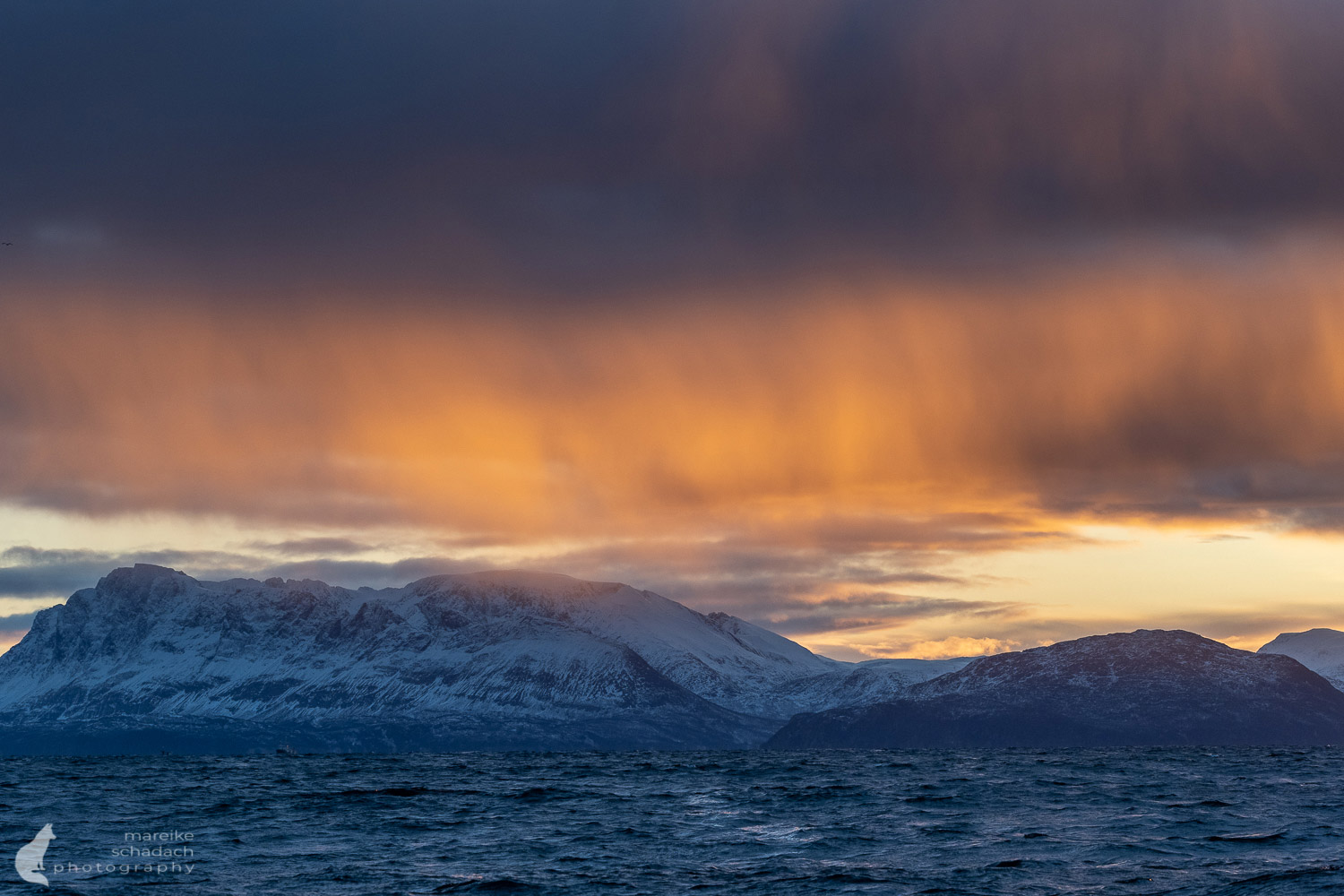
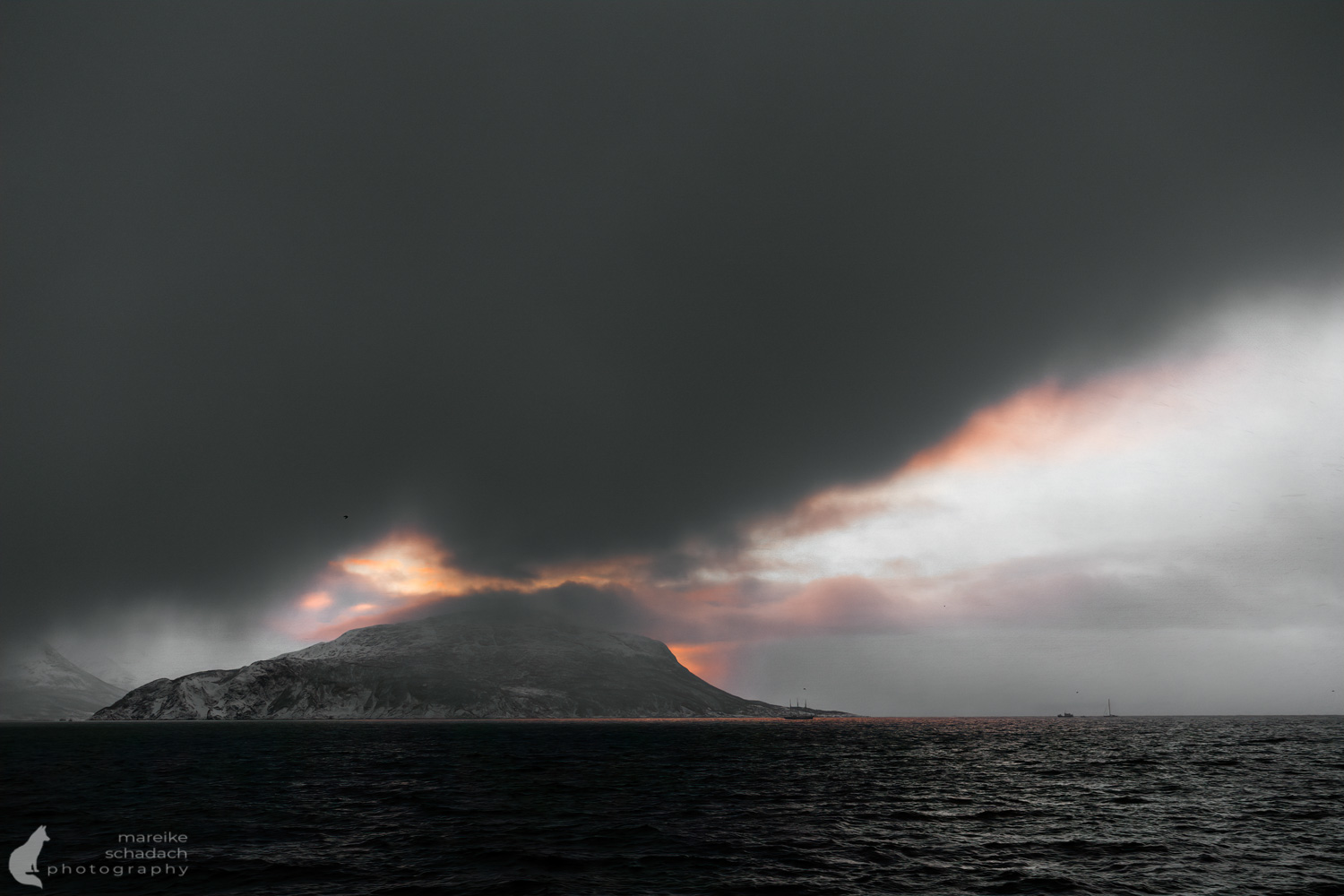
Sea Eagles and Sea Gulls
While the orcas and humpback whales are chasing the herring, sea gulls and sea eagles are attracted. They hope that one or the other herring will fall off for them. So you can often see whales, sea eagles and sea gulls all together at the same time.
Read more about
Tromso in winter, reindeer races in the pedestrian zone and the absolutely worth seeing polar museum.

Book recommendations for Norway
You want to know where the journey goes? Then I can recommend these books*.
You can order the books with a click on the pictures on Amazon. If you buy a product via an affiliate link, I get a small commission, and you help me to keep filling Fernweh-Motive with interesting articles. The product will not be more expensive for you, and you will do me a huge favor.
Have you ever been to Norway in winter? Maybe even snorkeling with orcas? Do you have any questions about my article? If yes, then write me a comment!
Do you want to know when there are new articles on my blog? Then follow me on Facebook, Pinterest or Instagram. I would also be very happy if you share my article with your friends.
Recommendations for further Reading
Do you love whales as much as I do? Then you might also be interested in my articles about the Beluga Whales of the Solowezki Islands or about a Kayak Tour at the Orcas of the San Juan Islands.

